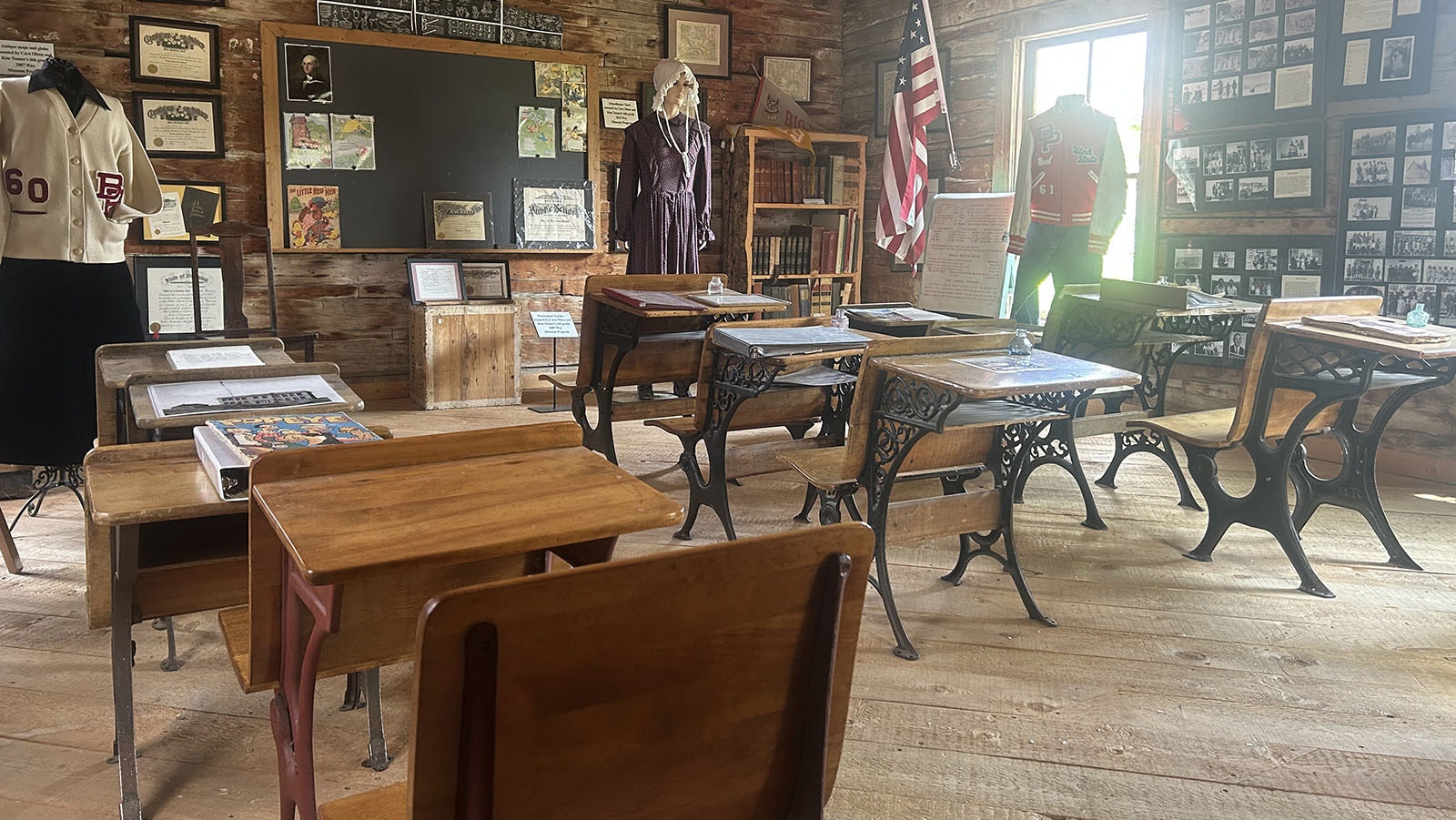BIG PINEY — Going back to school was much different for the students in Wyoming's frontier communities around the turn of the century than it is today.
Most had already been up for several hours when they arrived at one of many log, one-room schoolhouses scattered throughout Sublette County. The students’ morning chores included chopping wood and hauling coal and water after traveling 2-4 miles to school either on foot or by horseback.
In these old schools, students attended first through eighth grade and ranged in age from 6 to 18. Some were only a few years younger than their teachers because the opportunity to attend school was not always available.
Students used outhouses. There was no plumbing or electricity. They used ink fountain pens to write and take tests and if they passed the test at the end of eighth grade they could go on to high school, which often meant being boarded with another family up to 100 miles from home.
A Totally Different Experience
One of these old log school buildings, the Price/Sommers School, is part of the campus that makes up the Green River Valley Museum in Big Piney.
Buck Bell, a Big Piney native and assistant manager at Green River Valley Museum, told Cowboy State Daily that going back to school in those days was altogether different than it is now because students regularly attended classes through the summer months.
Traveling in the winter was more difficult and dangerous. There were no rides to school in SUVs with heated seats. Many parents today couldn't fathom sending their kids off through Wyoming's vast rangelands on a four-mile hike, sometimes on snowshoes, that could take two hours one-way.
There were no chicken-fried steaks covered with warm gravy for school lunch. These kids ate cold pancakes or peanut butter and jelly sandwiches. Apples were a luxury in this high-elevation, short season area. Families would travel to the railyards farther south to get fruit, usually once each year and bring it home and preserve it in jars.
The sacrifices these families were willing to make are a good illustration of their commitment to education, Bell said.
"This school was in use long before Big Piney was incorporated in 1913," Bell said. "Families worked together to establish the schools. These were people living on the frontier with no comforts. It would have been easy for them to discount education to keep their businesses alive. It's admirable. Education is hope for the future."
Many of the Sublette County schools were built near the borders of the large ranches to accommodate more students.

Built To Last
The Price/Sommers School is a building that has stood the test of time. It was originally built in the 1890s and called the Ball/Dunham school. It was later disassembled and moved closer to the Price Ranch and Sommers Ranch near the Green River a few miles north of Big Piney.
Sometime in the 1990s it was disassembled again and donated to the Green River Valley Museum by the Price family.
When it arrived in Big Piney and became a museum piece, it got a new front door, a new floor and new roof, all made from rough-cut pine.
Inside the door are about 10 small desks with an ink well on each one. Photos on the wall show similar schools in Pinedale, Big Sandy, Boulder, Dunham, Emerson, Kelly, Kendall, Daniel and others.
There's a wax model of a schoolmarm in a vintage dress and bonnet, a blackboard, two bookcases and several awards earned by students for their perfect attendance.
Many of the teachers came from states well to the east of Wyoming. Bell said they came looking for a "frontier experience," and left home and city life behind.
"Typically, they would live with one of the ranch families that offered them a room and a couple of meals each day," he said.

More Than Just Schools
The buildings were also used by the community for meetings, dances and other social events. The teachers were considered leaders in the communities, and more was expected of them beyond teaching, he said.
"Teachers would become responsible for more than just the classroom duties," he said. "It would have taken a lot of courage to make that kind of commitment back then."
Interpretive signs provided by the Wyoming Council for the Humanities provide informative details of the period such as the following:
"Given the obstacles of the American system of public education that existed in this high, cold region, it is remarkable that it took place at all. ... The one-room log schoolhouse was a symbol for hopes each community cherished for its children, for the blend of tradition and aspiration that is so deeply American. These ranch schools show how the individualism that brought families to the frontier was tempered by the need to establish a community. How rugged independence might coexist with cooperation in a good cause, and education in the vast landscape of Wyoming's Upper Green River was such a cause."
Teachers recognized in the Price Sommers School include Emma Hiel, 1922-23; Elaine Larkin Moffat, 1923-24; Alice Bender Lozier, 1924-25; Marie Nelson and Lucille Gartman, 1925-26; and Carolyn Collins Ball, 1926-27.






